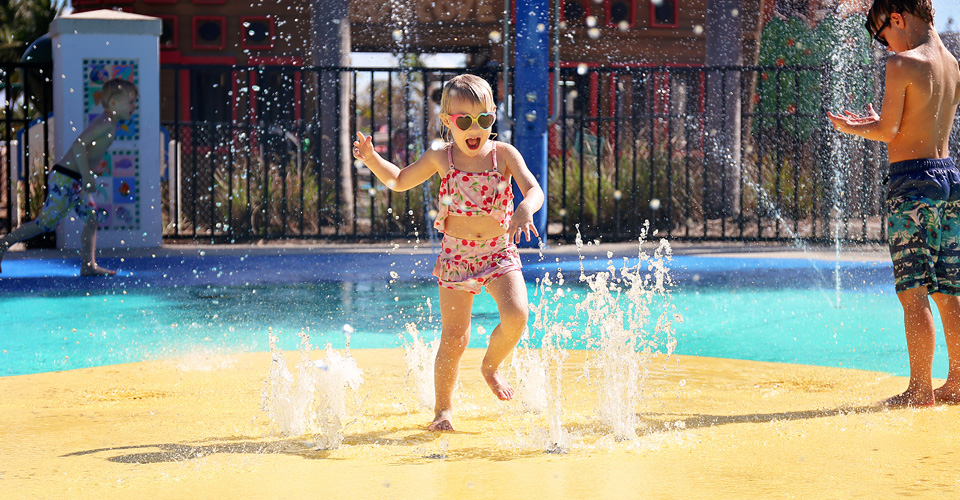Splash pads are popular attractions for families looking for an easy alternative to public pools and water parks. These little spray parks come with a variety of water features and interactive fountains that don’t allow standing water to collect. Therefore, there’s a reduced risk of drowning for young children.
But a splash park still has the potential for illness and water-related injuries. Here's what you need to know about splash pad safety.
Best practices for splash pad safety
Due to their design, spray pads aren’t always regulated as an “aquatic venue.” They also aren’t always required to disinfect the splash pad water with germ-killing chemicals. Therefore, germs can spread and make users sick.
The Centers for Disease Control and Prevention (CDC) lays out some splash pad safety tips to help families stop the spread of germs in these water play areas, including:
-
Have children shower before getting in the water.
-
Stay out of the water if you’re sick with diarrhea.
-
Take kids on bathroom breaks and check diapers every hour. Note that swim diapers don’t stop germs, poop or pee from getting in the water.
-
Don’t swallow the spray water.
-
Don’t poop or pee in the water.
-
Don’t sit or stand on the water jets or spray features.
Additionally, splash pads don’t typically have provided supervision to enforce water safety rules. So, injuries can occur from climbing on splash pad equipment, rough housing with others, running on splash pad surfaces and other potential hazards.
Splash pads are often a convenient and inexpensive way to allow your children to have a fun time and rich sensory experience on a hot day. But they still require supervision and water safety planning to ensure your family stays safe and well.
For more summer fun safety information, check out these water safety tips to share with your children.







.png?width=600&name=HSI-CTA-EmergencyCareTraining%20(1).png)











Comments